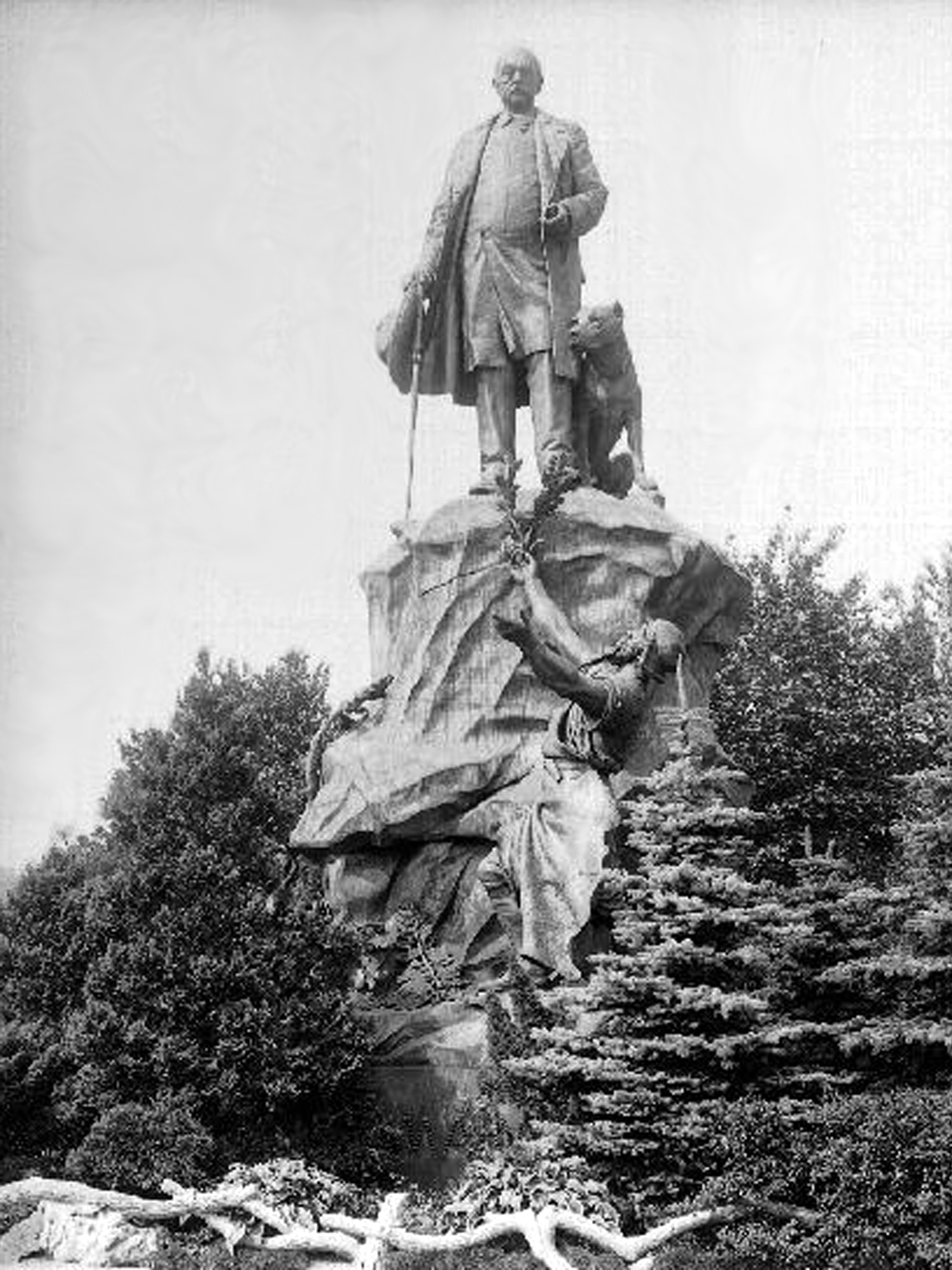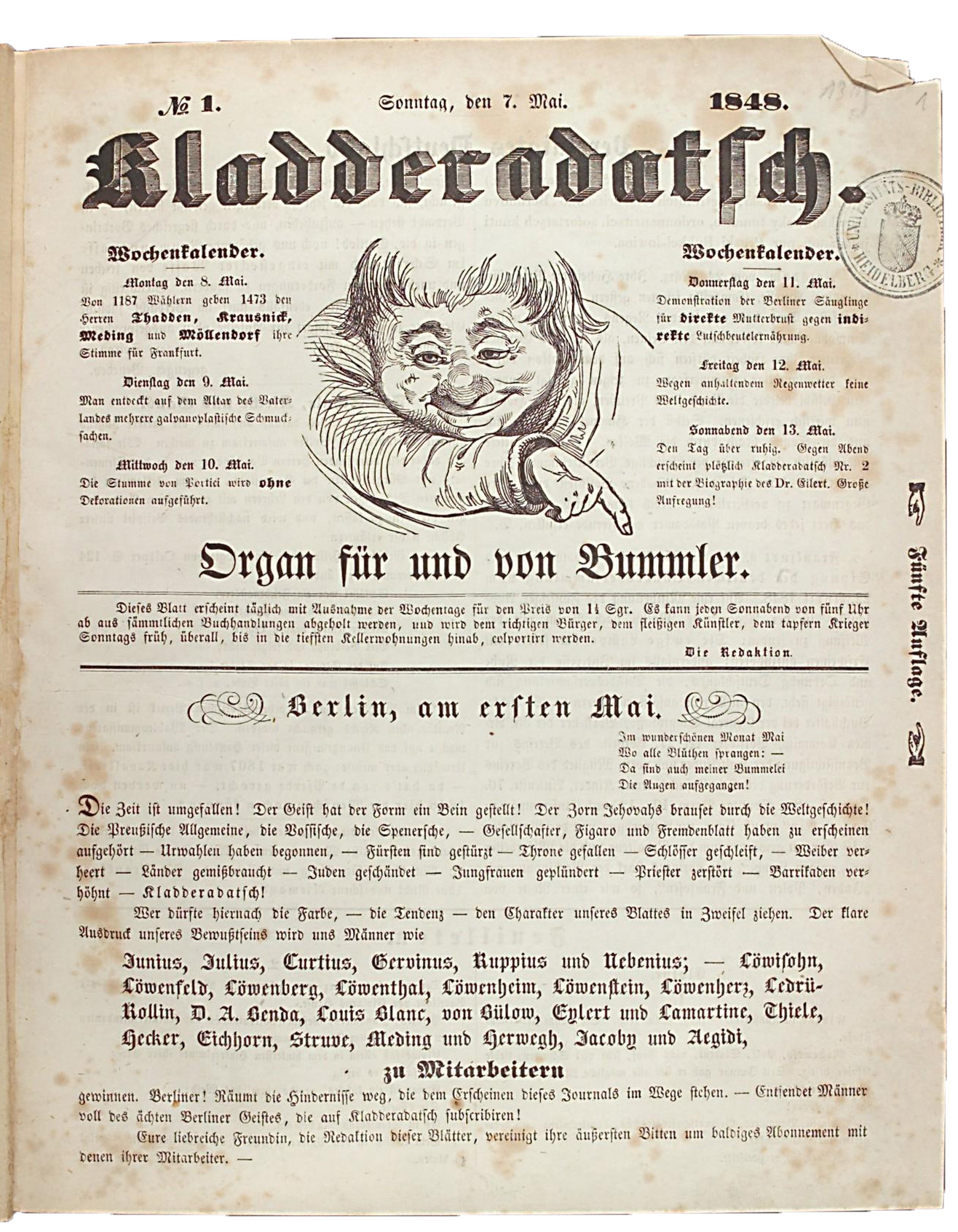|
Reichshund
Reichshund ("dog of the Empire")Henry Vizetelly, ''Berlin under the New Empire: Its Institutions, Inhabitants, Industry, Monuments, Museums, Social Life, Manners, and Amusements'', Volume 1 London: Tinsley, 1879, p. 420Bryce, p. 126. was an informal term used in Germany for ''Reichskanzler'' Otto von Bismarck's dogs and more generally for similar dogs, particularly Great Danes. Bismarck's dogs Keeping dogs in Germany became increasingly fashionable as the 19th century continued, and people in public life often did so as part of their image.Wolfgang Wippermann, "Biche und Blondi, Tyras und Timmy. Repräsentation durch Hunde", in: Lutz Huth and Michael Krzeminski, eds., ''Repräsentation in Politik, Medien und Gesellschaft'', Würzburg: Königshausen & Neumann, 2007, , pp. 185–202p. 192 Bismarck reportedly took a blonde Great Dane called Ariel with him when he entered the University of Göttingen in 1832. He continued to keep Great Danes throughout the rest of his life.Occasion ... [...More Info...] [...Related Items...] OR: [Wikipedia] [Google] [Baidu] |
Adolf Lehnert
Adolf Lehnert (20 July 1862 – 6 January 1948) was a Leipzig sculptor and medal designer. Life Family Franz Robert Adolf Lehnert was born in Leipzig, the second of his parents' twelve recorded children. His father, also called Adolf Lehnert, was an engine driver. His mother, born Lina Werner, was originally from Borna (to the southeast of the city). In 1889 Lehnert married Else Riedel, daughter of the composer-musical director Carl Riedel. This connected him to one of Leipzig's leading artistic families. Sadly, however, the marriage was childless and Else died in 1907. Lehnert's second marriage was to Johanna Wildenhayn (1875–1957). This marriage resulted in two recorded children: Siegfried (1910–1941) and Waltraut (1916–2007). Education After leaving school Adolf Lehnert studied at the Leipzig Arts Academy (''"Hochschule für Grafik und Buchkunst Leipzig"'') between 1880 and 1888. His principal teacher was Melchior zur Straßen. At the academy's a ... [...More Info...] [...Related Items...] OR: [Wikipedia] [Google] [Baidu] |
Otto Von Bismarck
Otto, Prince of Bismarck, Count of Bismarck-Schönhausen, Duke of Lauenburg (, ; 1 April 1815 – 30 July 1898), born Otto Eduard Leopold von Bismarck, was a conservative German statesman and diplomat. From his origins in the upper class of Junker landowners, Bismarck rose rapidly in Prussian politics, and from 1862 to 1890 he was the Minister President of Prussia, minister president and List of foreign ministers of Prussia, foreign minister of Prussia. Before his rise to the Executive (government), executive, he was the Prussian ambassador to Russian Empire, Russia and Second French Empire, France and served in both houses of the Landtag of Prussia, Prussian Parliament. He masterminded the unification of Germany in 1871 and served as the first Chancellor of Germany#Under the Emperor (1871–1918), Chancellor of the German Empire until 1890, in which capacity he dominated European affairs. He had served as the chancellor of the North German Confederation from 1867 to 1871, alon ... [...More Info...] [...Related Items...] OR: [Wikipedia] [Google] [Baidu] |
Great Dane
The Great Dane is a large sized dog breed originating from Germany. The Great Dane descends from hunting dogs from the Middle Ages used to hunt wild boar and deer, and as guardians of German nobility. It is one of the largest breeds in the world along with its relative, the Irish Wolfhound. History Origins In the middle of the 16th century, the nobility in many countries of Europe imported strong, long-legged dogs from England, which were descended from crossbreeds between English Mastiffs and Irish Wolfhounds. They were dog hybrids in different sizes and phenotypes with no formal breed.Ludwig Beckmann (1895)''Geschichte und Beschreibung der Rassen des Hundes'' Volume 1, p. 6 (in German) These dogs were called ''Englische Docke'' or ''Englische Tocke'' – later written and spelled: ''Dogge'' – or ''Englischer Hund'' in Germany. The name simply meant "English dog". Since then, the English word "dog" has come to be associated with a molossoid dog in Germany and France. T ... [...More Info...] [...Related Items...] OR: [Wikipedia] [Google] [Baidu] |
Harald Haacke
Harald or Haraldr is the Old Norse form of the given name Harold. It may refer to: Medieval Kings of Denmark * Harald Bluetooth (935–985/986) Kings of Norway * Harald Fairhair (c. 850–c. 933) * Harald Greycloak (died 970) * Harald Hardrada (1015–1066) * Harald Gille (reigned 1130–1136) Grand Dukes of Kiev * Mstislav the Great (1076–1132), known as Harald in Norse sagas King of Mann and the Isles * Haraldr Óláfsson (died 1248) Earls of Orkney * Harald Haakonsson (died 1131) * Harald Maddadsson (–1206) * Harald Eiriksson Others * Hagrold (fl. 944–954), also known as Harald, Scandinavian chieftain in Normandy * Harald Grenske (10th century), petty king in Vestfold in Norway * Harald Klak (–), king in Jutland * Harald Wartooth, legendary king of Sweden, Denmark and Norway * Harald the Younger, 9th-century Viking leader Modern name Royalty * Harald V of Norway (born 1937), present King of Norway * Prince Harald of Denmark (1876–1949) Arts and entertainme ... [...More Info...] [...Related Items...] OR: [Wikipedia] [Google] [Baidu] |
Grunewald (locality)
Grunewald () is a locality (''Ortsteil'') within the Berlin borough (''Bezirk'') of Charlottenburg-Wilmersdorf. Famous for the homonymous forest, until 2001 administrative reform it was part of the former district of Wilmersdorf. Next to Lichterfelde West, Dahlem and Westend, it is part of the affluent Berlin "Villenbogen", a row of 19th century suburbs completely made up of mansions. Geography The locality is situated in the western side of the city and is separated from Spandau by the river Havel. It borders with the localities of Westend, Halensee, Schmargendorf, Wilhelmstadt, Gatow (both in Spandau district), Nikolassee, Zehlendorf and Dahlem (all three in Steglitz-Zehlendorf district). The Grunewald forest is 10 km away from Berlin-Mitte (Germany's capital). History Etymology The name derives from the Grunewald hunting lodge of 1543, the oldest preserved castle in Berlin, which is, however, officially located within the adjacent Dahlem locality. It was erected i ... [...More Info...] [...Related Items...] OR: [Wikipedia] [Google] [Baidu] |
Max Klein
Max Klein (27 January 1847, Gönc - 6 September 1908, Berlin) was a German sculptor and medallist, of Jewish ancestry. Life and work His family was very poor. After finishing primary school, he learned watchmaking, then went to Pest, where he was employed in the sculpture workshop of Ferenc Szandház (1827-1902), and his brother Károly (1824-1892). He studied briefly at the Prussian Academy of Arts, in 1865, but had to leave for financial reasons. In 1869, he went to Rome for further training. While there, he joined the , but was a member for only a year. He travelled back through Breslau, Vienna, and Munich; arriving in Berlin in 1874. There, he worked in the studios of the animal painter, Carl Steffeck. After a second trip to Rome, he returned to Berlin, where he settled permanently in the Grunewald district. His debut came at an Academy exhibition in 1877, but received little public recognition until 1879, when he displayed a dramatic bronze group, " Hercules and the Nemea ... [...More Info...] [...Related Items...] OR: [Wikipedia] [Google] [Baidu] |
Wigs On The Green
''Wigs on the Green'' is a 1935 satirical novel by Nancy Mitford. A roman à clef, it is notable for lampooning British fascism, specifically political enthusiasms of Mitford's sisters Unity Mitford and Diana Mosley. Background Using her sisters' wild fervour for fascism (and, in Unity's case, Nazism) as fodder for her satire, Mitford centred her plot around the character of Captain Jack (based on Sir Oswald Mosley, her sister Diana's future husband), the leader of the Union Jackshirts (based on the British Union of Fascists), and Eugenia Malmains (based on Mitford's sister Unity.) Always fond of cruel teasing, she was taken aback when Diana Mitford took offence to the novel and tried to placate her sister by excising the three chapters that dealt directly with the Captain Jack character. The novel still created a deep rift between the sisters. When asked to republish the book after World War II World War II or the Second World War, often abbreviated as WWII ... [...More Info...] [...Related Items...] OR: [Wikipedia] [Google] [Baidu] |
Nancy Mitford
Nancy Freeman-Mitford (28 November 1904 – 30 June 1973), known as Nancy Mitford, was an English novelist, biographer, and journalist. The eldest of the Mitford sisters, she was regarded as one of the "bright young things" on the London social scene in the inter-war period. She wrote several novels about upper-class life in England and France, and is considered a sharp and often provocative wit. She also has a reputation as a writer of popular historical biographies. Mitford enjoyed a privileged childhood as the eldest daughter of the Hon. David Freeman-Mitford, later 2nd Baron Redesdale. Educated privately, she had no training as a writer before publishing her first novel in 1931. This early effort and the three that followed it created little stir. Her two semi-autobiographical post-war novels, ''The Pursuit of Love'' (1945) and ''Love in a Cold Climate'' (1949), established her reputation. Mitford's marriage to Peter Rodd (1933) proved unsatisfactory to both, and they ... [...More Info...] [...Related Items...] OR: [Wikipedia] [Google] [Baidu] |
Kladderadatsch
''Kladderadatsch'' ( onomatopoeic for "Crash") was a satirical German-language magazine first published in Berlin on 7 May 1848. It appeared weekly or as the ''Kladderadatsch'' put it: "daily, except for weekdays." It was founded by Albert Hofmann and David Kalisch, the latter the son of a Jewish merchant and the author of several works of comedy.Library: Kladderadatsch (1848-1944) {{DEFAULTSORT:Kladderadatsch Defunct magazines published in Germany German-language magazines Satirical magazines published in Germany Magazines established in 1848 Magazines disestablished in 1944 Magazines published in Berlin 1848 establishments in Germany 1944 disestablishments in Germany Conservative magazines published in Germany ... [...More Info...] [...Related Items...] OR: [Wikipedia] [Google] [Baidu] |
William Beatty-Kingston
William Beatty-Kingston (1837– 4 October 1900) was an English journalist, known both as a foreign correspondent and a music critic. Life and career Beatty-Kingston was born in London in 1837. His father was a well-known scholar and archaeologist, for many years secretary of the Royal Historical Society, English Historical Society. His mother was a composer, who published songs under the pseudonym "Marielle".Sala, Mrs George Augustus. "Famous People I Have Known", ''The Gentlewoman'', 2 May 1891, p. 385 Beatty-Kingston joined the staff of the Public Record Office, but found little scope for advancement there, and in 1856 he moved to work for the Austrian consular service in London. In 1860 he married a Parisienne, Cecile Antoinette Cadenne de Lannoy. They had a son and two daughters. In 1866 Beatty-Kingston began working for ''The Daily Telegraph'' as its correspondent in Vienna, afterwards moving to Berlin, and then returning to London as the paper's foreign editor. [...More Info...] [...Related Items...] OR: [Wikipedia] [Google] [Baidu] |





